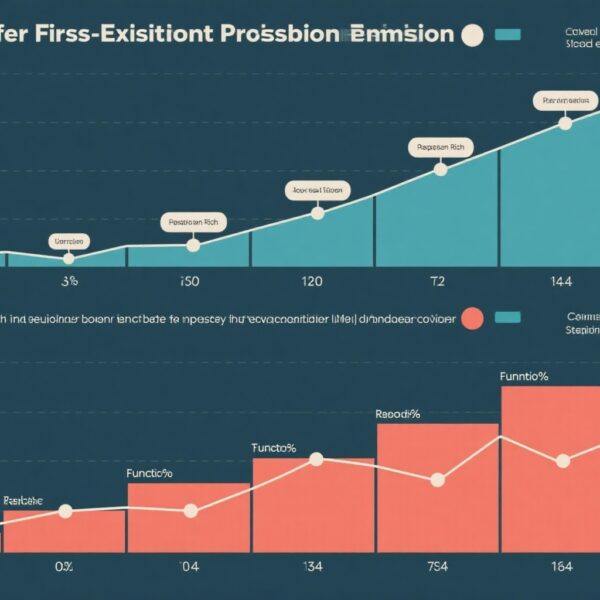Introduction: The Intricate Dance of the Immune System
Every day, the human immune system confronts a vast array of microbial invaders—bacteria, viruses, fungi, and more—that seek to breach our body’s defenses. These pathogens are diverse in shape and strategy; many have evolved sophisticated mechanisms to evade detection by mimicking molecules found in our own cells. This mimicry poses a critical question: How does the immune system accurately identify and eliminate true threats without mistakenly attacking the body’s own tissues? This question lies at the heart of the 2025 Nobel Prize in Physiology or Medicine, awarded to Mary E. Brunkow, Fred Ramsdell, and Shimon Sakaguchi for their seminal discoveries in the field of peripheral immune tolerance.
The Breakthrough Discovery: Regulatory T Cells—The Immune System’s Peacekeepers
The trio unveiled the existence and function of a specialized group of immune cells known as regulatory T cells (Tregs). Unlike conventional T cells that actively seek and destroy foreign invaders, Tregs act as the immune system’s internal peacekeepers. These cells delicately suppress excessive immune responses, preventing the immune system from launching attacks against the body’s own tissues—a phenomenon that leads to autoimmune diseases.
Olle Kämpe, chairman of the Nobel Committee, remarked, “Their findings have fundamentally transformed our understanding of immune regulation. They explain why most individuals, despite constant microbial exposure, do not develop severe autoimmune disorders. This work marks a milestone in medical science.”
From Central to Peripheral: Expanding Our Understanding of Immune Tolerance
Before 1995, immunologists believed that the primary safeguard against self-reactive T cells was ‘central tolerance,’ a process occurring in the thymus where potentially harmful T cells are eliminated during development. However, Shimon Sakaguchi’s research challenged this paradigm. He discovered that some self-reactive T cells escape this thymic screening and enter peripheral tissues. Crucially, Sakaguchi identified a unique subset of T cells capable of suppressing these potentially damaging cells, thus maintaining immune tolerance beyond the thymus. This discovery introduced the concept of “peripheral immune tolerance,” broadening our understanding of immune regulation.
Foxp3: The Genetic Key to Immune Regulation
Building on this framework, Mary E. Brunkow and Fred Ramsdell made a pivotal discovery in 2001. While studying mice prone to multi-organ autoimmune disease, they pinpointed mutations in a gene crucial for the development and function of Tregs. This gene, named Foxp3, was also linked to a rare but severe human condition called IPEX syndrome (Immune dysregulation, Polyendocrinopathy, Enteropathy, X-linked). Individuals with IPEX suffer life-threatening autoimmunity, underscoring Foxp3’s vital role in immune homeostasis.
Two years later, Sakaguchi’s team integrated these findings by demonstrating that Foxp3 acts as the master regulator, or “switch,” controlling the development and suppressive function of regulatory T cells. Mice lacking Foxp3 fail to generate functional Tregs and rapidly develop widespread autoimmune disease. This work firmly established the molecular underpinnings of Tregs and opened new avenues for exploring immune tolerance mechanisms.
The Role of Regulatory T Cells in Health and Disease
Regulatory T cells are now recognized as central overseers of immune system balance, constantly patrolling the body to monitor and fine-tune immune responses. By ensuring that the immune reaction is powerful enough to defend against pathogens, yet restrained enough to prevent damaging the body’s own tissues, Tregs maintain what is called “immune homeostasis.”
Disruptions in Treg function or numbers are implicated in a spectrum of diseases:
– Autoimmune diseases: Insufficient Treg activity can result in conditions like type 1 diabetes, rheumatoid arthritis, and multiple sclerosis.
– Transplant rejection: Modulating Tregs can help prevent the immune system from attacking transplanted organs.
– Cancer: Tumors can hijack Tregs to suppress anti-tumor immunity, posing challenges for cancer immunotherapy.
Translating Discovery into Therapies: Clinical Implications
The insights from Brunkow, Ramsdell, and Sakaguchi have revolutionized therapeutic approaches. Clinical trials are actively investigating strategies to harness Tregs—either by expanding their numbers, enhancing their function, or transferring them into patients—to treat autoimmune diseases and improve transplant outcomes.
For example, in type 1 diabetes, therapies aimed at increasing the activity of Tregs could help preserve insulin-producing pancreatic cells. Similarly, in organ transplantation, inducing Treg-mediated tolerance offers hope for reducing or eliminating the need for lifelong immunosuppressive drugs, which carry significant side effects.
Moreover, understanding the dual role of Tregs in cancer has led to fine-tuned approaches that aim to block their suppressive effects within tumors, enhancing the patient’s own immune attack against cancer cells.
Case Vignette: Sarah’s Journey with Autoimmune Disease and Emerging Hope
Sarah, a 28-year-old woman diagnosed with early-stage rheumatoid arthritis, struggled with joint pain and fatigue. Conventional treatments controlled symptoms but carried risks of infection due to broad immune suppression. Learning about Treg-based therapies from her rheumatologist sparked hope; clinical trials exploring Treg infusion offered a targeted way to restore immune tolerance without compromising overall immunity. Sarah’s story embodies the promise of translational research fueled by discoveries recognized with the 2025 Nobel Prize.
Concluding Remarks: A Landmark in Immunology and Medicine
The groundbreaking research by Mary E. Brunkow, Fred Ramsdell, and Shimon Sakaguchi elucidates one of the immune system’s most sophisticated balancing acts—discriminating friend from foe to protect the body without turning against itself. Their work not only advances fundamental scientific knowledge but also guides the development of innovative therapies poised to transform patient care across autoimmune diseases, transplantation, and oncology.
As research continues, we anticipate further breakthroughs in modulating regulatory T cells for tailored immune therapies, charting a course toward improved health and disease management worldwide.
References
1. Sakaguchi S, et al. “Immunologic self-tolerance maintained by activated T cells expressing IL-2 receptor alpha-chains (CD25).” J Immunol. 1995;155(3):1151–1164.
2. Brunkow ME, et al. “Disruption of a new forkhead/winged-helix protein, scurfin, results in the fatal lymphoproliferative disorder of the scurfy mouse.” Nat Genet. 2001;27(1):68–73.
3. Wildin RS, et al. “IPEX syndrome: a unique X-linked disorder of immune dysregulation.” J Clin Immunol. 2002;22(1):35–42.
4. Hori S, Nomura T, Sakaguchi S. “Control of regulatory T cell development by the transcription factor Foxp3.” Science. 2003;299(5609):1057–1061.
5. Josefowicz SZ, Lu LF, Rudensky AY. “Regulatory T cells: mechanisms of differentiation and function.” Annu Rev Immunol. 2012;30:531–564.
6. Bluestone JA, Buckner JH, et al. “Type 1 diabetes immunotherapy using polyclonal regulatory T cells.” Sci Transl Med. 2015;7(315):315ra189.



